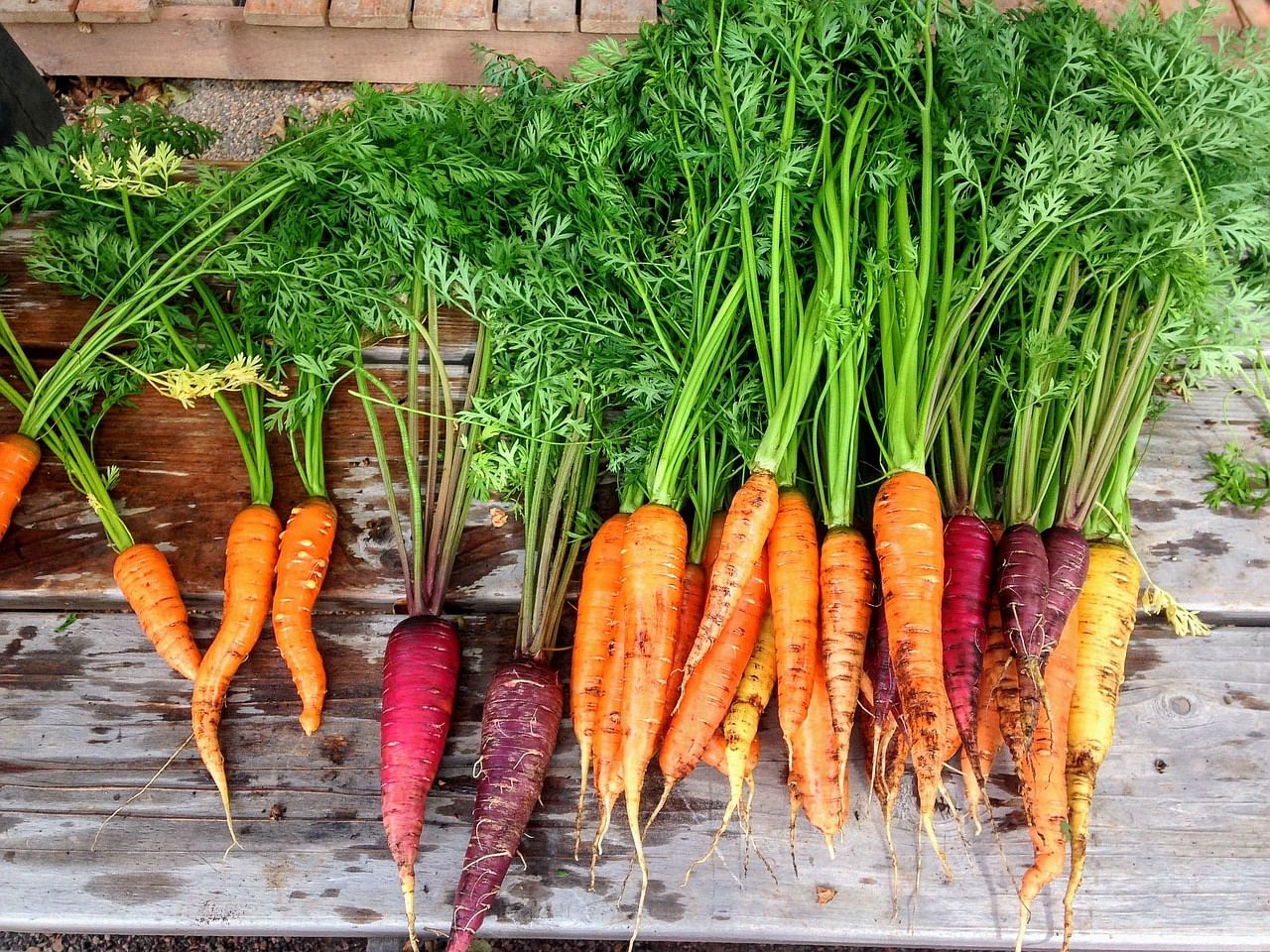
April 4th marks International Carrot Day, a celebration of one of the world's most beloved root vegetables. In India, where agriculture is deeply rooted in tradition and innovation, a diverse range of carrot varieties thrive. Let's explore some of India's notable carrot varieties that promise excellent yields and flavors, reflecting the rich agricultural heritage of the country.
1. Pusa Kesar:
Developed at the Indian Agricultural Research Institute (IARI) in New Delhi, Pusa Kesar boasts vibrant red-colored roots with a self-colored core. This variety exhibits remarkable heat tolerance, making it suitable for cultivation from August to early October. With a maturity period of 90-110 days, farmers can expect an average yield of 30 t/ha.
2. Pusa Meghali:
Also originating from IARI, Pusa Meghali features orange flesh and a self-colored core, coupled with a short top. Ideal for sowing between August and September, this variety offers an average yield of 25-30 t/ha. Its adaptability and productivity make it a popular choice among Indian carrot cultivators.
3. Selection 223 and No. 29:
Developed by the Punjab Agricultural University (PAU) in Ludhiana, Selection 223 showcases orange roots with light orange flesh, while No. 29 presents long tapering roots in a light red hue. Both varieties contribute to the diversity of India's carrot farming landscape, offering distinct characteristics and flavors.
4. Nantes Half Long and Early Nantes:
Nantes Half Long features cylindrical stumpy roots with an orange-scarlet hue and a self-colored core. This cultivar matures within 110-120 days, providing farmers with a reliable option for a bountiful harvest. On the other hand, Early Nantes, originating from Europe, boasts excellent quality despite its thin skin and brittle top. With a maturity period of 90-100 days, it offers a delicate texture and flavor profile.
5. Chantenay and Imperator:
Chantenay stands out as an excellent cultivar suitable for canning and storage purposes. Its attractive orange roots, thick at the shoulders and gradually tapering, make it a favorite among consumers. Conversely, Imperator, a mid-to-late maturing variety, presents white deep orange roots with a tapered end. With roots ranging from 15-17.5 cm in length and 2.4-4.5 cm in diameter, Imperator promises both quality and flavor.
6. Zeno and Pusa Yamdagini:
Zeno, popular in the Nilgiri hills region, is renowned for its high yield and exceptional flavor. Its cultivation adds to the rich agricultural tapestry of India, reflecting regional preferences and climatic conditions. Additionally, Pusa Yamdagini, developed at the Regional Research Station (RRS) in Katrain, offers early maturity, providing farmers with a competitive edge in the market.
As we celebrate International Carrot Day, let's acknowledge the diversity and resilience of India's carrot varieties. From the robust Pusa Kesar to the flavorful Chantenay, each cultivar contributes to the country's agricultural heritage. By exploring and cultivating these varieties, farmers can ensure a sustainable and prosperous future for India's carrot industry.










